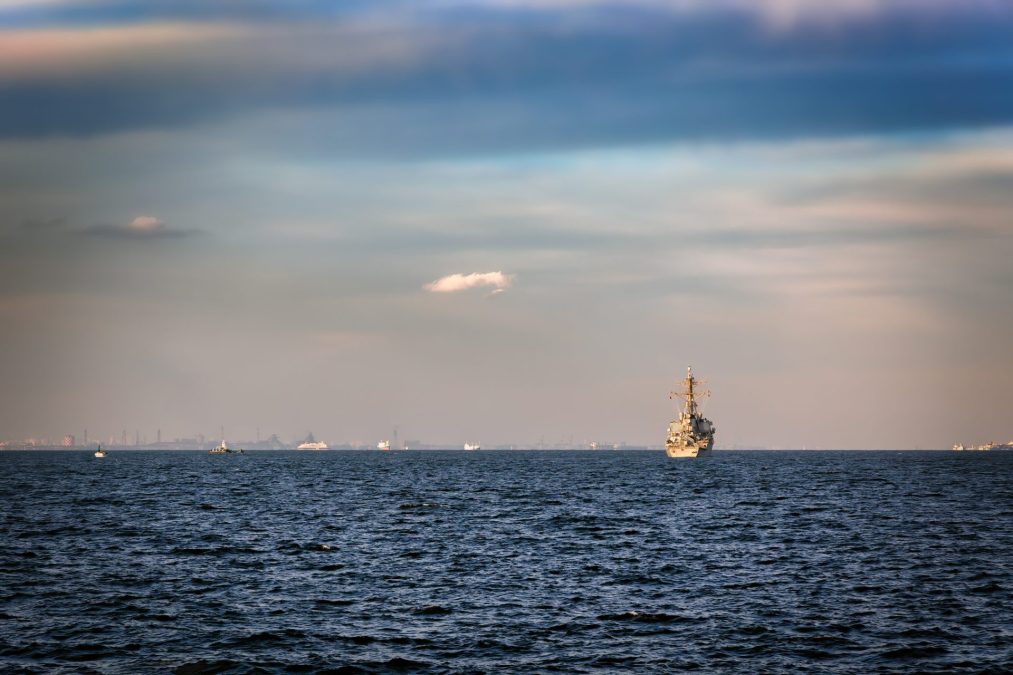Naval Surface Force plan to accelerate AI adoption expected ‘in the next few weeks’

Naval Surface Force, U.S. Pacific Fleet has reached the final phase of drafting its first-ever, overarching data and artificial intelligence strategy and implementation plan — and aims to share those resources more broadly before this summer ends, a key task force leader told FedScoop on Friday.
Naval Surface Force organizations perform a variety of administrative, maintenance, workforce and operational training functions and help equip and staff Navy warships before they are deployed to the respective fleet commands for military missions. As one of the Navy’s largest enterprises, the organizations capture, produce and rely on massive amounts of data.
About a year ago, the Navy created Task Force Hopper to produce a complex digital infrastructure and cultural transformation to ultimately drive AI-enabled capabilities across the surface force.
“We understand that AI is the most powerful decision engine for the readiness and sustainment of our ships and for warfighting — and we wanted to see, as an enterprise, how we can best accelerate this effort. This is about AI adaptation,” Task Force Hopper Director Capt. Pete Kim told FedScoop in an interview.
Kim has served in that role since the task force’s inception, and also leads the Surface Analytics Group.
To him and his team, the task force represents “a broad enterprise approach about hiring the right digital talent, making sure our teams have the right development platforms for data excellent exploitation and creating new processes for the force.”
As such a sprawling enterprise, the surface force has many projects and initiatives within the Navy and in collaboration with academia and industry, resulting in siloed but duplicative efforts and gaps in transparency, among other issues.
“We all know that AI is totally dependent on high-quality and accurate data. We believe that data management is the most important discipline for our era, and that’s what we wanted to focus on. So, one of our first initiatives was to draft a data AI strategy and implementation plan for the force to establish that structure,” Kim explained.
That in-the-making document will be unclassified, “but the audience is really the surface enterprise,” he added, suggesting that only a summary may be publicly disseminated.
“Right now, it is in the final stages of drafting. We hope to push that out to the enterprise here in the next few weeks,” the director said.
Broadly, the strategy and accompanying plan will detail why the Naval Surface Force is taking the approach that it is, and include directions for how officials will support the chosen framework.
“It really focuses on making data AI-ready across the board — and so it gets into data management, data governance, digital talent, ensuring that we’ve got clearly defined use cases,” Kim noted.
The strategy anchors on what he deemed a federated model with a number of different supporting organizations.
“It’s about central data governance, with a central data catalog and then having these decentralized analytic and AI development nodes at different places in the enterprise, where people know the data the best,” Kim said.
While nodes at one military location, or associated with one team, might focus on maintenance, others could concentrate on staffing or other needs. Kim added that the nodes will hone in on different categories of AI, depending “on the use case and what products and models we’re trying to build.”
Offering two examples of nodes aligned with readiness, he pointed to the Surface Analytics Group that he runs, which assists with “the force generation of about 168 warships,” and a separate group that zeroes in on operational safety and risk indicators.
“Readiness is our focus here at the [Naval Surface Force]. Program offices and warfare centers that are, let’s just say, focused on lethality or warfighting, we expect those organizations to have nodes working on their specific areas and use cases,” Kim said. “Then the follow on here is, again, that common development environment where we as an enterprise have transparency on all the different projects that are going on — and then we can leverage each other’s works.”
Once the strategy and implementation plan are released, next steps will prioritize empowering each of the AI nodes.
“These nodes are going to support all the priority projects. So, it’s going to be about, ‘Hey, do you have the right tools in this development environment? Do you have the right digital talent to move out on this? Are there different datasets that you need that the rest of the enterprise can help you out with?’ So, we’ll really focus in on the select nodes to support those priority projects,” Kim said.




